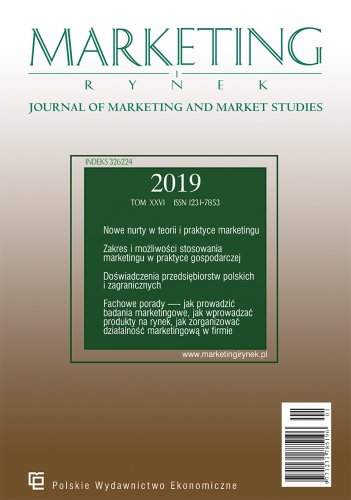The importance of visual control in the production process of the company from the metal industry
The article presents the results in the assessment of the importance of visual control (visual management) in the production process of aluminum profiles in an enterprise in the metal industry involved in the production of architectural aluminum profile systems. In order to assess the validity of the visual control, the "BOST - Toyota management rules in questions" questionnaire was used, where the respondents were production workers of the examined enterprise. The obtained survey data was subjected to statistical analysis to discover additional dependencies in the employees' responses. The result of the research was the ranking of the importance of factors in the production process and the place in this ranking of visual control. Visual control proved to be of great importance in the production process of aluminum profiles by employees, ranked second in the importance series among the six factors of the production process, which should be considered the result of the company's activities in the implementation and maintenance of an early detection system based on for visual control tools.
References
Ahuja, I.P.S. i Kumar, P. (2009). A case study of total productive maintenance implementation at precision tube mills. Journal of Quality in Maintenance Engineering, 15(3), 241–258. https://doi.org/10.1108/13552510910983198
Borkowski, S. (2012a). Toyotaryzm. Wyniki badań BOST. Warszawa: Wyd. Menedżerskie PTM.
Borkowski, S. (2012b). Toyotaryzm. Zasady zarządzania Toyoty w pytaniach. Warszawa: Wyd. Menedżerskie PTM.
Borkowski, S. i Knop, K. (2011). Evaluation of Visual Control in 5S and 5M. Referat wygłoszony na: Ekonomika a manazment podnikov 2011. Medzinarodna vedecka konferencia. Zvolen, Słowacja.
Borkowski, S., Knop, K. i Choryłek, K. (2011). The Importance of Visual Control in a Geotextiles Production. W: S. Borkowski, M. Konstanciak (red.), Toyotarity. Quality in the Toyota's Management Principles (s. 59-74). Samara: SamGUPS.
Czerska, J. (2014). Podstawowe narzędzia Lean Manufacturing. Gdańsk: LeanQ Team.
Dudek, M. (2016). Szczupłe systemy wytwarzania. Warszawa: Difin.
Galsworth, G.D. (2005). Visual Workplace/Visual Thinking: Creating Enterprise Excellence through the Technologies of the Visual Workplace. Portland: Visual-Lean Enterprise Press. https://doi.org/10.1201/b22109
Höök, M. i Stehn, L. (2008). Lean principles in industrialized housing production: The need for a cultural change. Lean Construction Journal, 20-33. https://doi.org/10.1080/01446190802422179
Imai, M. (2006). Gemba Kaizen. Zdroworozsądkowe, niskokosztowe podejście do zarządzania. Warszawa: MT Biznes.
Jankowski, Ł. (2015). Visual Management jako metoda wspierająca ciągłe doskonalenie. Pozyskano z: http://leanmanufacturing.pl/artykuly/lean-w-teorii/visual-management-jako-metoda-wspierajaca-ciagle-doskonalenie.html. https://doi.org/10.7206/cr.2081-7029.41
Kaczmarczyk, S. (2000). Badania marketingowe. Metody i techniki. Warszawa: PWE.
Kołecki, T. (2006). Jidoka – zapobieganie błędom – Poka-Yoke w systemach wytwórczych. Zarządzanie jakością, 2(4).
Liker, J.K. (2005). Droga Toyoty – 14 zasad zarządzania wiodącej firmy produkcyjnej świata. Warszawa: MT Biznes.
Łazicki, A. (2011). Systemy zarządzania przedsiębiorstwem. Techniki Lean Management i Kaizen. Warszawa: Wyd. Wiedza i Praktyka.
Ohno, T. (2008). System produkcyjny Toyoty. Więcej niż produkcja na dużą skalę. Wrocław: ProdPress.com.
Pająk, E. (2013). Zasady i metody szczupłego wytwarzania. Konin: Wyd. Państwowej Wyższej Szkoły Zawodowej w Koninie.
Purzycka, A. (2015). Zarządzanie przez wizualizację (Visual Management) – dobre praktyki. Pozyskano z: http://www.qualityskills.pl/zarzadzanie-przez-wizualizacje-visual-management-dobre-praktyki. https://doi.org/10.4467/20843968zp.17.034.8018
Rabiej, M. (2012). Statystyka z programem Statistica. Warszawa: Helion.
Sagan, A. (2004). Jeden obraz ukazuje więcej niż 10 liczb, czyli jak budować mapy zadowolenia klienta z wykorzystaniem programu Statistica. Pozyskano z: http://www.statsoft.pl/portals/0/Downloads/04obraz.pdf (04.01.2019).
Sagan, A. (2009). Analiza preferencji konsumentów z wykorzystaniem programu Statistica – analiza Conjoint i skalowanie wielowymiarowe. Pozyskano z: https://media.statsoft.pl/_old_dnn/ downloads/analiza_preferencji_konsumentow.pdf
Selejdak, J., Klimecka-Tatar, D., Knop, K. i Budzynowska, M. (2012). Metoda 5S. Zastosowanie, wdrażanie i narzędzia wspomagające. Warszawa: Verlag Dashofer.
Shinbun, N.K. (red.). (1995). Visual Control Systems. Portland: Productivity Press.

